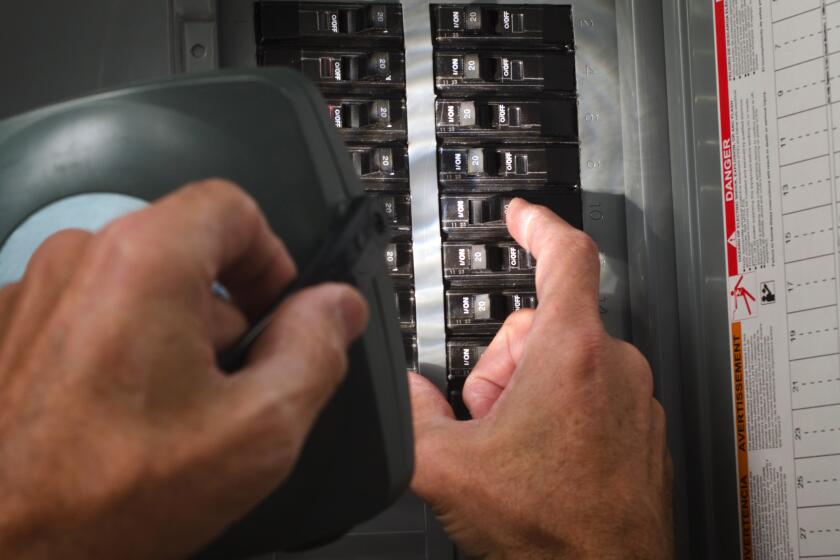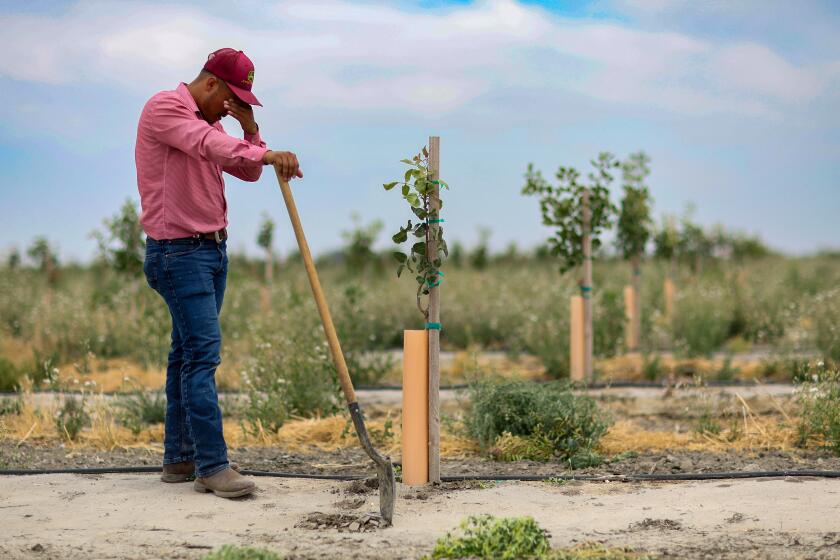Cancer Risk for Restaurant Workers Seen
In the debate over the health effects of smoking in restaurants and bars, one group has been largely ignored--restaurant and bar employees.
A new study that is reported today in the Journal of the American Medical Assn. suggests that such employees have a 50% to 90% higher risk of developing lung cancer because of the unusually high levels of tobacco smoke in the air of such establishments.
In light of the study, the Los Angeles County Medical Assn. called Tuesday for patrons to voluntarily refrain from smoking in bars and restaurants and for restaurateurs to seriously reconsider their current campaign to overturn a recently enacted ban on smoking in Los Angeles restaurants.
There is compelling scientific evidence that secondhand smoke in such establishments represents a serious hazard not only to patrons but also to employees, medical association President Dr. Ben Schwachman said.
“The thing that is really important is that the study establishes that restaurants aren’t just public places, they are workplaces,” said Dr. Stanton A. Glantz, a cardiologist at UC San Francisco. “This suggests strongly that high levels of smoke are a real threat to the employees there.”
The new study “is not at all surprising,” added Dr. Kenneth W. Kizer, a toxicologist at UC Davis who was formerly director of the state Department of Health Services. “All of the data that is emerging is very consistent . . . that secondhand smoke is a carcinogen. We’re going to see a lot more studies and they are all going to say the same thing.”
“Restaurateurs are always talking about the customers having a choice, but the workers don’t have that choice,” said Juliette Linzer, director of the American Lung Assn.’s Bar and Restaurant Employees Against Tobacco Hazards project in the Bay Area. “We have nothing against smokers, but there must be a recognition that these workers need to be protected.”
The Los Angeles City Council recently passed a ban on smoking in restaurants--but not in bars--as have 68 other cities and counties around the country. Enforcement of the ban has been delayed, however, as the result of a petition circulated by a tobacco industry-backed group called the Hospitality Coalition. If the signatures on the petitions are validated, it would force a referendum on the issue.
The author of the new study is Dr. Michael Siegel, an epidemiologist who was at UC Berkeley when he performed his research but is at the federal Centers for Disease Control and Prevention in Atlanta. Siegel drew together information from previous studies that analyzed the amount of tobacco smoke in bars and restaurants and from other studies about the health of workers in various industries.
“That’s a worthwhile thing to do because nobody ever looked at it in the way he did,” Glantz said. “Nobody had ever put together the exposure data and the cancer rates before.”
Compiling results from previous studies, Siegel found that the levels of environmental tobacco smoke, commonly known as ETS, in restaurants average 1.6 to 2 times higher than levels in workplaces of other businesses and 1.5 times higher than in smokers’ homes.
The air was worse in bars. There, levels of ETS were 3.9 to 6.1 times higher than in other workplaces and 4.4 to 4.5 times as high as in smokers’ homes.
Overall, the epidemiological evidence from six prior studies, two of them originating in California, showed that the workers were at a 50% to 90% increased risk of developing lung cancer.
“It appears clear that ETS is increasing lung cancer risk,” Siegel said. “To protect these workers, smoking in bars and restaurants should be prohibited.”
His study of cancer is “only the tip of the iceberg,” Siegel added. Previous studies have shown that secondhand smoke is also a major contributor to heart disease, which has not been studied among food service workers.
Although the contribution of secondhand smoke to heart disease is smaller than its contribution to lung cancer, the number of people with heart disease is much larger than the number with lung cancer, and ETS will thus have a larger impact.
The issue also has direct impact on the pocketbooks of the public, added Dr. Raymond Melrose, an oral pathologist at USC who serves as a spokesman for the local American Cancer Society on the issue.
“Many times these workers are not highly paid, not unionized and may not have access to health benefits,” he said. “When they become ill, they often delay seeking medical care because of their lack of access. They end up in county health facilities with prolonged stays and irreversible damage. All of this costs all of us a lot of money.”
More to Read
Sign up for Essential California
The most important California stories and recommendations in your inbox every morning.
You may occasionally receive promotional content from the Los Angeles Times.






